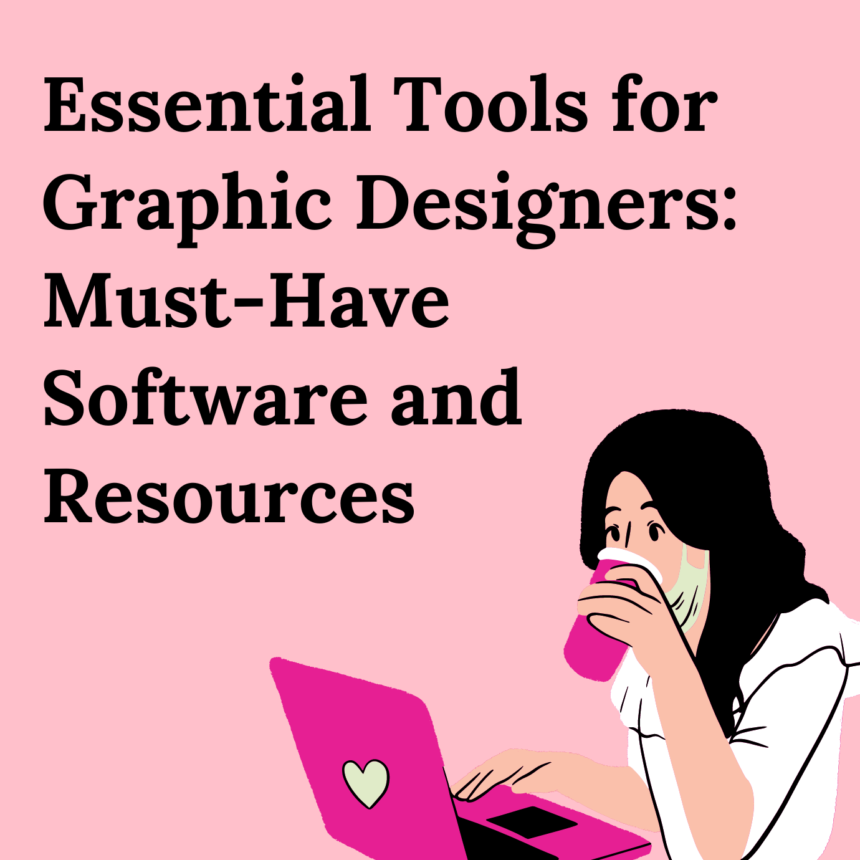Graphic design is a creative and technical field that requires the right tools and resources to bring ideas to life. Whether you’re a professional graphic designer or just starting out, having access to the essential software and resources can significantly enhance your design workflow and productivity. Here are some must-have tools for graphic designers:
1. Adobe Creative Cloud:
Adobe Creative Cloud is a comprehensive suite of industry-standard software that includes applications like Adobe Photoshop, Illustrator, InDesign, and more. These tools offer a wide range of features for image editing, vector graphics creation, page layout design, and typography. Adobe Creative Cloud provides a powerful toolkit for graphic designers to unleash their creativity and create professional designs.
2. Sketch:
Sketch is a popular vector graphics editor designed specifically for digital design. It offers an intuitive interface and powerful features for creating user interfaces (UI), web design layouts, icons, and illustrations. Sketch provides a streamlined workflow and collaboration capabilities that make it a go-to tool for many graphic designers, particularly those working on digital and UI/UX design projects.
3. Canva:
Canva is a web-based design tool that caters to both beginners and professionals. It offers an extensive library of templates, graphics, and stock photos, making it easy to create social media graphics, presentations, posters, and more. Canva’s user-friendly interface and drag-and-drop functionality make it accessible to users with minimal design experience.
4. Procreate:
Procreate is a powerful digital painting and illustration app available exclusively for iPad. It offers a wide range of brushes, advanced layering capabilities, and various artistic tools that enable designers to create stunning digital artworks and illustrations. Procreate’s intuitive interface and seamless integration with Apple Pencil make it a favorite among digital artists and illustrators.
5. Pantone Color Guides:
Pantone Color Guides are essential references for accurate color communication in graphic design. These guides provide standardized color swatches and codes that ensure consistency across different platforms and print materials. Having a Pantone Color Guide helps designers select and communicate colors accurately, whether for print or digital design.
6. Stock Photo Libraries:
Access to high-quality stock photos is crucial for graphic designers. Stock photo libraries like Shutterstock, Adobe Stock, or Unsplash offer vast collections of professional photos, illustrations, and vectors that designers can use in their projects. These resources save time and effort by providing ready-made visuals that enhance the overall design.
7. Typography Resources:
Typography plays a significant role in graphic design, and having access to a diverse range of fonts and typography resources is essential. Websites like Google Fonts, Adobe Fonts, and Font Squirrel offer extensive collections of free and premium fonts that designers can use to enhance their typographic compositions.
8. Design Communities and Inspiration Platforms:
Being part of design communities and seeking inspiration from fellow designers is essential for growth and creativity. Platforms like Behance, Dribbble, and Pinterest provide a space for designers to showcase their work, discover new design trends, and find inspiration from a global design community.
9. Design Grid Systems and Wireframing Tools:
Design grid systems and wireframing tools, such as Gridlover, Bootstrap, or Figma, assist in creating structured layouts and wireframes. These tools help designers maintain consistency, alignment, and readability in their designs, especially when working on web design, UI/UX, or print layouts.
10. Design Project Management and Collaboration Tools:
Efficient project management and collaboration are vital for smooth design workflows, especially when working with clients or teams. Tools like Trello, Asana, or Slack enable designers to manage tasks, track progress, and communicate effectively with stakeholders throughout the design process.
Investing in these essential tools and resources can greatly enhance a graphic designer’s capabilities, productivity, and creativity. However, it’s important to remember that the tools alone do not make a designer. Developing skills, staying inspired, and continuously learning are equally important for achieving design excellence.
